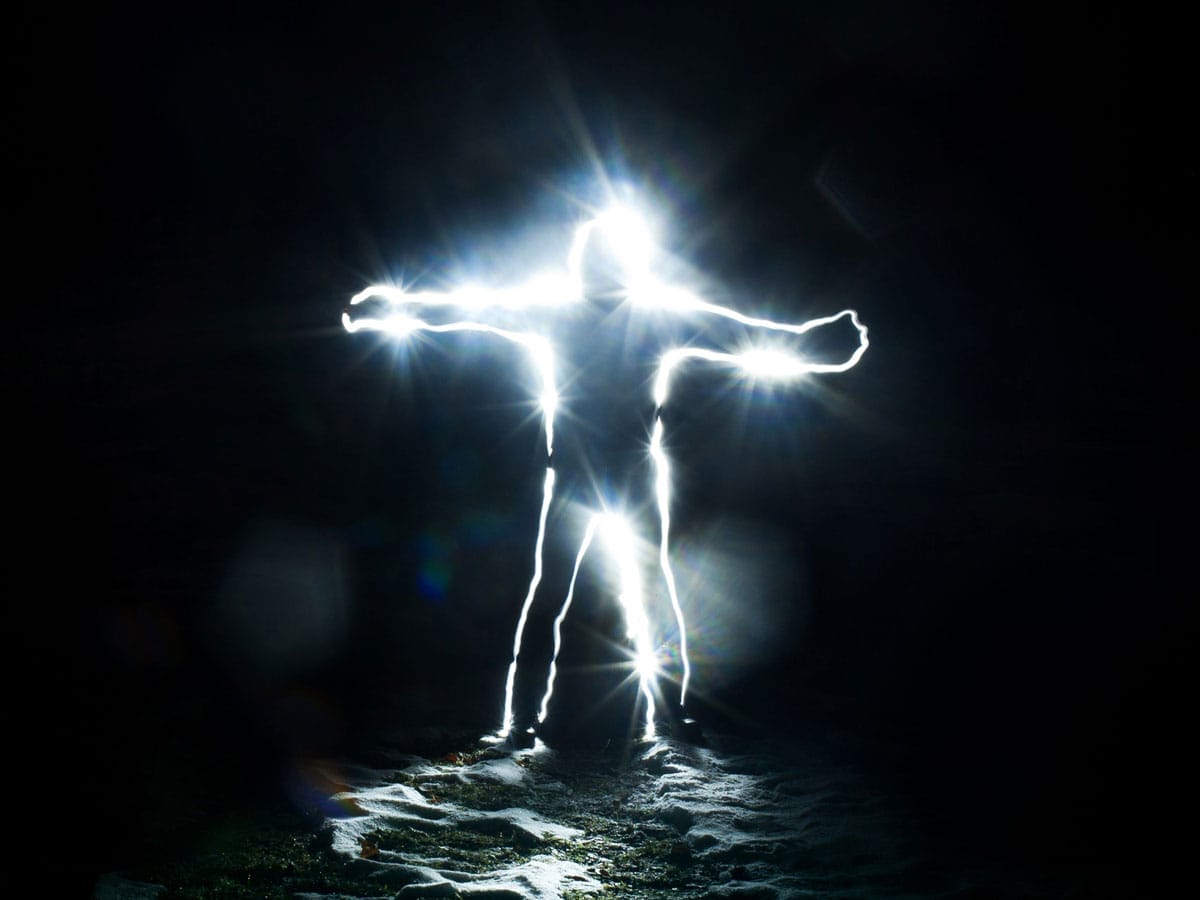The Exorcist Archetype
The Exorcist Archetype
The exorcist archetype drives out evil spirits from a person or place. Originally the word “exorcise” meant to conjure up an evil spirit. This shows the thin line the exorcist walks between expelling the darkness and invoking it.
Demon / Daimon / Daemon
Evil spirits are often described as demons. Demons have a reputation for causing torment, illness, and calamity.
The term demon originates from the Greek word “daimon” (also spelled “daemon”), which started out with a neutral connotation. Those of you who watch His Dark Materials on HBO or BBC are familiar with this definition. Daimon refers to a spirit of any kind from a guardian angel to a malevolent force. The exorcist archetype is able to tell the difference between different types of daimons.
Her ability to tell good from evil is a valuable skill because seemingly mild things can be dangerous. On the other hand, apparently fierce beings turn out to be benevolent. As St. Teresa of Avila said, “The devil is a skillful painter.”
Not every spirit that possesses us is bad. We can be possessed by the spirit of a helpful, creative idea. Psychics, mediums, and shamans are possessed by helping spirits to receive insight for others. They are trust the exorcist archetype within to discern what energy is appropriate to channel.
Inner and Outer Demons
Outer demons manifest as literal evil in the world that can inhabit people and places. These are the demons of TV shows and movies such as The Exorcist. Outer demons cause good people to turn into monsters. Outer demons can inflict terrible illnesses. One example in the Bible is the story of Jesus and the boy with seizures in the gospel of Matthew chapter 17: 14-21.
It takes years of training to learn how to conduct exorcisms of outer demons. Anyone learning to expel outer demons should have an expert mentor or teacher. Becoming a professional exorcist requires rigorous initiation and training.
If you are going to a professional exorcist to battle outer demons besieging you, be mindful. You run the risk of developing a codependent relationship with your exorcist. You are less likely to be ensnared by outer demons if you are able to confront your inner demons.
Inner demons manifest in a myriad of ways. Some of the most common are the demons of fear, craving, hatred, grudges, pride, depression, anxiety, and addiction. We often use the term “he is battling his demons” when someone is struggling with mental illness or addiction. We all have our own inner demons to clear. Even though we use the language metaphorically, inner demons can inflict real harm.
Exorcist Archetype versus Shaman Archetype
Not all shamans are exorcists, and not all exorcists are shamans. Just like not all priests are exorcists, and not all exorcists are priests. A person can carry the exorcist archetype without being associated with shamanism or any clergy. There are many specialties in shamanism, and exorcism is just one of at least a dozen specialities.
The exorcist archetype is concerned with clearing out or neutralizing evil spirits and evil traits. She works with the fundamental polarities of light and dark. She is the candle in the darkness that pitches good against evil.
The shaman archetype is an intermediary between the worlds. She navigates the spirit, human, and natural worlds. The shaman has a foot in both worlds. She communicates with nature spirits and the elements, and performs healings.
The Shadow Exorcist Archetype
In the shadow, the exorcist archetype mistrusts any spirit. An example of this is the Catholic priest that exorcises a little girl who plays with nature spirits in her backyard. The girl’s affiliation with pixies and sprites is innocent and natural. However, the exorcist in the shadow makes the little girl feel wrong. He taints her innate intimacy with the helping spirits of the natural world. At the most extreme, the exorcist archetype works to cast out traits of people he does not agree with. An example of this is conversion or reparative therapy for LGBTQ+ people. The shadow exorcist puts the label of “evil demon” on someone’s human nature.
The exorcist archetype in the shadow may have trouble handling all the evil around her, and, if she’s not careful, the darkness can overwhelm her. This is the cautionary tale of the exorcist becoming the possessed person. The demon jumps off the person she’s exorcising and onto her.
The shadow exorcist can become possessed with a lust for power. She may be so good at her job of expelling demonic spirits that she gets high on the power and prestige. In battling so many blood-thirsty demons, the exorcist archetype becomes a monster. She can’t help herself but find demons everywhere and pride herself on being the person who can conquer them.
Light Attracts Dark and Dark Attracts Light
The exorcist archetype in the light is a master at one particular mystical law: the law that light attracts darkness and darkness attracts light. This is the mystical law of yin and yang, of opposing forces.
The exorcist is mindful that as her light grows so will the darkness that comes to her door. Therefore, she is careful not to amplify her light beyond her capacity to manage the darkness.
Many exorcists are overwhelmed by dark forces when they focus solely on conjuring the light and refuse to meet their own inner demons. The exorcist in her power knows that working through her own fears and insecurities is just as important than nurturing her inner light.
“One does not become enlightened by imagining figures of light but by making the darkness conscious.” – Carl Jung
Exorcist Archetype in the Light
The exorcist archetype in the light is a master at navigating the stages of exorcism. She is able to name and engage with the demon. This shines light on the darkness, which is the first step to neutralizing it.
Demons have a natural ability to re-sprout like the hydra’s head. The exorcist knows this. In the story of the Buddhist goddess Kali and the Demons, she struggles to defeat the last demon king because every drop of blood he sheds sprouts a new demon horde.
The exorcist archetype in the light knows that the demons will always come back. Mara always returned to Buddha the Enlightened One. Jesus exorcised many. The exorcist in her power knows that does not mean she’s failed. This is a matter of mystical law – light attracts darkness.
There is a link between the exorcist archetype and the practice of feeding. Kali drank Raktavira’s blood to staunch the flow of demons. Machig Labdron, a famous 11th century Tibetan yogini, feed a horde of nagas (the Buddhist term for demons) from her own body. There is something about nourishing one another that breaks polarization. Polarization keeps the demon alive.
The exorcist in the light is able to carry the paradox of dark and light. She is able to hold her center in the midst of the most powerful dualities – dark and light; good and evil. She does not shy away from darkness, nor does she become intoxicated by the light. She neutralizes duality into oneness.
Explore your relationship
with the exorcist archetype…
The “Purifier Archetypes” Online Class
All three archetypes clear out the status quo to make way for an expansive, naked awareness. They purify us along the spiritual path and address the fears we encounter. The exorcist transmutes demons into allies and separation into union. The destroyer embraces the cycle of destruction to unlock hidden potential. The liberator uses wisdom to free us from attachment and suffering.






[…] Native to the Americas, turkey vulture is a New World vulture who is connected with the power of the exorcist archetype. This article focuses primarily on the turkey vulture, and includes the symbolism of all vultures […]
I loved this so much. These words resonated with me so well on exact situation that I’m currently experiencing! Thank you for the write????????
You’re most welcome Jordan! I’m super glad that you were helped by what I shared here and I hope to stay in touch! Many Blessings, Stacey